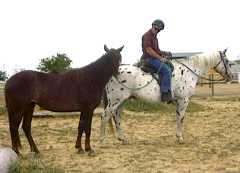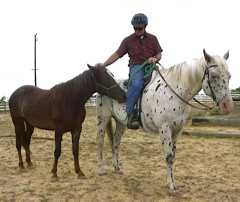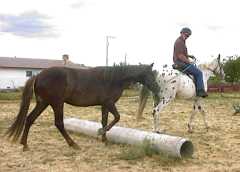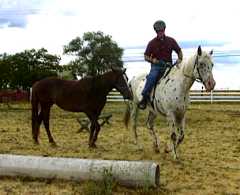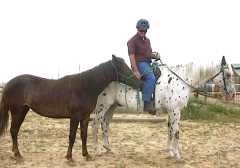|
One of the oft misunderstood methods of gentling and developing green horses
is the use of "horse on horse." The purpose of this practice is not to simply
muscle the young horse around, but rather provide a transition which involves
behaviors that are familiar to the youngster which at the same time allows us
to introduce new elements such as being led and having a human close by and
"overhead."
Issues such as yielding to space and pressure, paying attention to body position
relative to the lead horse, paying attention to obstacles, keeping track of
footing and getting used to humans being taller than the horse are important
to a young horse's development. Once the young horse is handling basic ground
schooling and if a steady, trustworthy leader horse is available, ponying can
quickly develop very important spatial, coordination and yielding skills.
With this filly we used ponying as a simple and effective bridge between
some real basic ground schooling and her first saddling. After a couple of
pony outings, we saddled Starfyre and having a rider on board in the saddle
was literally a ho-hum event. Prior to the pony work I don't believe she would
have tolerated the pressure and presence of a rider without feeling the need
to leave due to the stress it would have created.
|
The presence of Prints helps make this new situation comfortable to
Starfyre. She is alert and curious and therefore ready to learn.
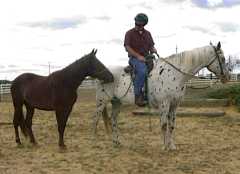
Once she is walking relaxed and has established a comfortable position,
we start navigating simple obstacles.
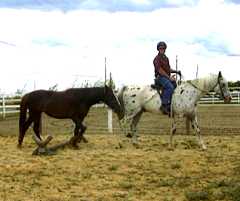
|
